Dry Cooling Tower
Dry Cooling Towers is a type of cooling system used in industrial and power generation processes to remove excess heat without the need for water. Unlike wet cooling towers, which use the evaporation of water to dissipate heat, dry cooling towers use air to cool a working fluid, usually by passing it through a heat exchanger. This system is advantageous in areas with limited water resources, as it significantly reduces water consumption and minimizes environmental impact. However, dry cooling tower are generally less efficient than wet cooling towers and may require more space and a higher capital investment.

Dry Cooling Tower
Design and variation
Air-Cooled Heat Exchangers
These consist of finned tube bundles over which ambient air is blown by fans. The fins increase the surface area, enhancing the heat transfer from the fluid inside the tubes to the air outside. Commonly used in both power plants and various industrial processes.

Natural Draft Dry Cooling Towers
Use the buoyancy of hot air to induce airflow without mechanical fans. These towers are tall structures, leveraging the stack effect where hot air naturally rises and is replaced by cooler ambient air.

Hybrid Cooling Towers
Combine both dry and wet cooling principles to optimize performance. In this design, dry cooling is used primarily, with wet cooling engaged during peak loads or high ambient temperatures to maintain efficiency

Dry Cooling Tower
Specification Details
| Model | Cooling Capacity (kW) | Air Flow Rate (m³/h) | Fan Type | Power Consumption (kW) | Dimensions (LxWxH) (m) | Weight (kg) | Noise Level (dB(A)) |
|---|---|---|---|---|---|---|---|
| DCT-1000 | 1000 | 150,000 | Axial | 12 | 5 x 3 x 6 | 2,500 | 85 |
| DCT-1500 | 1500 | 225,000 | Centrifugal | 18 | 6 x 4 x 7 | 3,000 | 88 |
| DCT-2000 | 2000 | 300,000 | Axial | 24 | 7 x 5 x 8 | 3,500 | 90 |
| DCT-2500 | 2500 | 375,000 | Centrifugal | 30 | 8 x 6 x 9 | 4,000 | 92 |
| DCT-3000 | 3000 | 450,000 | Axial | 36 | 9 x 7 x 10 | 4,500 | 95 |
Dry Cooling Tower
Operations for
Heat Transfer Mechanisms
Conduction:
Inside the Tubes: The hot fluid (such as water or another coolant) flows through the tubes of the heat exchanger. As it flows, heat from the fluid is transferred to the inner walls of the tubes through conduction.
Through the Tube Walls: The heat then travels through the tube walls, moving from the inner surface to the outer surface. The efficiency of this process depends on the thermal conductivity of the tube material.
Convection:
External Air Flow: Air is drawn over the outside of the tubes. This can be done naturally (in natural draft towers) or using fans (in mechanical draft towers).
Heat Transfer to Air: The heat from the outer walls of the tubes is transferred to the air by convection.
Cooling Process Steps
Entering Air and Fluid:
Ambient Air Intake: Cooler ambient air enters the tower, typically through intake louvers or open sides.
Hot Fluid Intake: The hot fluid enters the heat exchanger tubes.
Heat Exchanger Operation:
Heat Transfer to Tube Walls: Heat from the fluid is conducted through the tube walls.
Heat Transfer to Air: Air flowing over the tubes absorbs the heat from the tube walls by convection.
Temperature Reduction:
Fluid Cooling: As the fluid moves through the tubes, it loses heat and its temperature decreases.
Our Cooling Towers We Manufacturer
Square Type Cooling Tower
Square Type Cooling Tower functions on the principle of induced draft counter flow operation. The fan generates vertical air movement that flows upwards on the tower and across the fills, opposing the water flow.
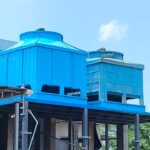
Round Type Cooling Tower
The Round Type Cooling Tower, constructed from FRP, boasts resistance to corrosion, resilience against extreme vibrations, and the ability to withstand high wind loads. Its design emphasizes efficiency
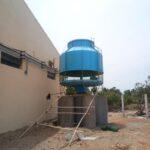
Wooden Cooling Tower
Wooden Cooling Tower are designed to handle water with high levels of dissolved solids (TDS). Hot water from the source is sprayed over special nozzles in a collection basin
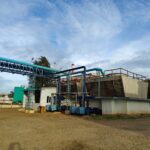
Closed Circuit Cooling Tower
Closed Circuit Cooling Tower is a type of heat exchanger that combines the functions of a cooling tower and a heat exchanger in a single unit.

Cross Flow Cooling Tower
Cross flow cooling towers is a cooling system where air flows horizontally through the tower while water flows vertically downward.
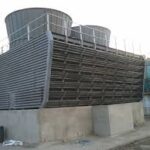
Evaporative Cooling Tower
Evaporative cooling tower are devices used to remove excess heat from industrial processes, power plants
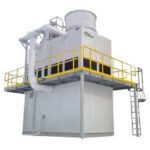
Natural Draft Cooling Tower
Natural draft cooling towers are a type of cooling tower that uses the natural convection of air to cool water.
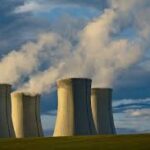
Cooling Towers We Exported to
Cooling Towers We Export to Lithuania
Cooling Towers We Export to Luxembourg
Cooling Towers We Export to Malta
Cooling Towers We Export to Moldova
Cooling Towers We Export to Monaco
Cooling Towers We Export to Montenegro
Cooling Towers We Export to Mymensingh
Cooling Towers We Export to Netherlands
Heat Exchangers We Exported to
Heat Exchangers We Export to East Nusa Tenggara
Heat Exchangers We Export to Eastern Province
Heat Exchangers We Export to Ehime
Heat Exchangers We Export to Estonia
Heat Exchangers We Export to Finland
Heat Exchangers We Export to France
Heat Exchangers We Export to Fujairah
Heat Exchangers We Export to Fujian
Industrial Chiller We Exported to
Industrial Chiller We Export to North Central Province
Industrial Chiller We Export to North Macedonia
Industrial Chiller We Export to North Western Province
Industrial Chiller We Export to Northern Province
Industrial Chiller We Export to Norway
Industrial Chiller We Export to Pahang
Industrial Chiller We Export to Penang
Industrial Chiller We Export to Perak
